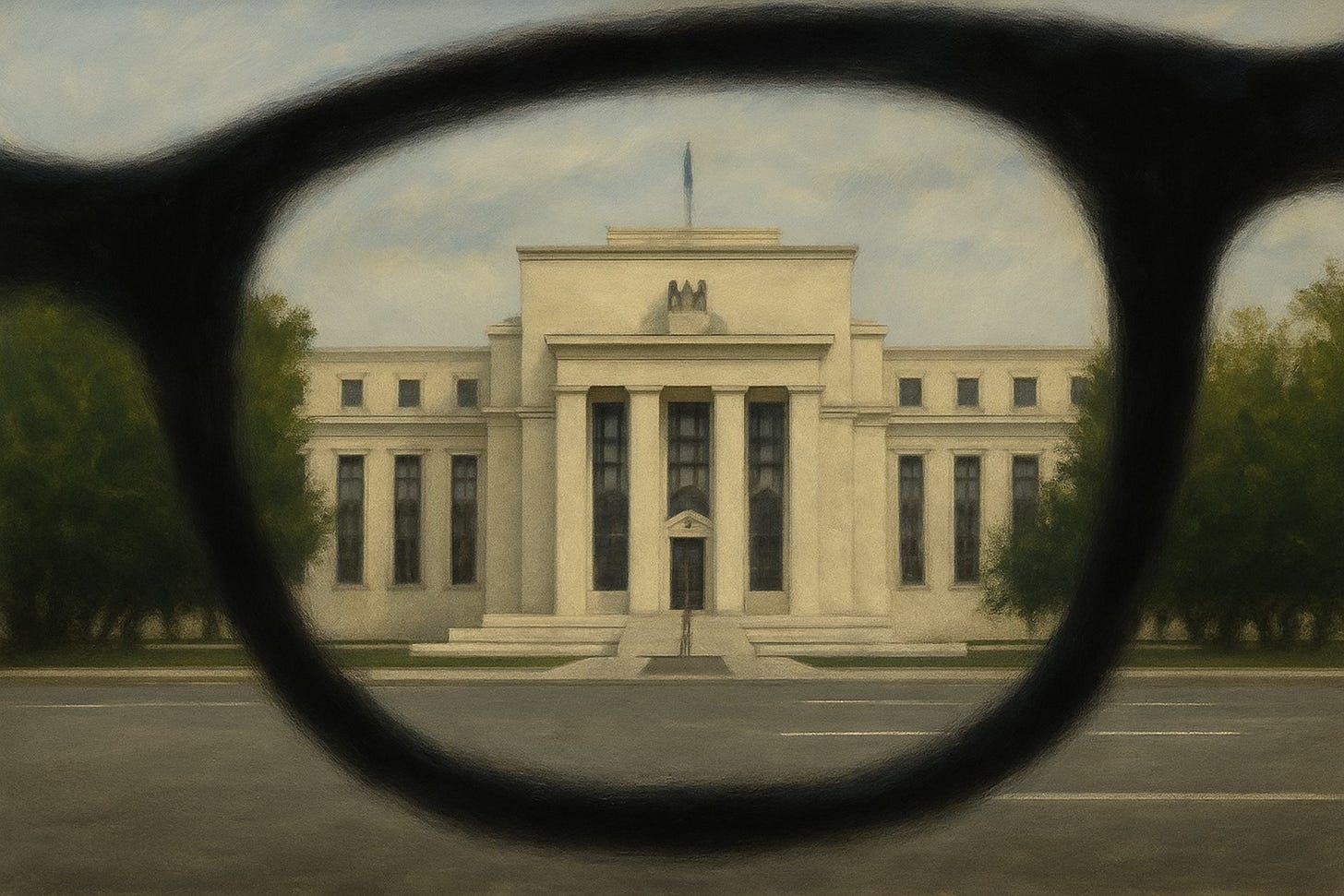The Fed Ended QT. Now What?
$6.5 trillion, permanent ample reserves, and the death of normal
On December 1st, the Federal Reserve stopped shrinking its balance sheet. Just... stopped.
After months of draining liquidity through quantitative tightening, after all the talk about returning to normalcy, they hit the brakes at $6.58 trillion and called it a day.
Before 2008, the Fed’s balance sheet sat under $1 trillion. After QE3, it peaked at $4.5 trillion. Now? Parked at $6.5 trillion. And according to the Fed’s own logic, that’s the floor, not the ceiling.
This smells like mission creep wrapped in technocratic jargon.
Money markets started cracking. The effective federal funds rate drifted higher. Tri-party repo rates climbed above where they should be. Banks were scrambling for cash.
Then came the smoking gun. The Standing Repo Facility, a backstop designed for genuine market stress, suddenly saw sustained usage after months of sitting dormant. The system was flashing red. The 2019 repo crisis, when overnight rates briefly spiked to 10%, was still fresh. The Fed couldn’t risk a repeat.
So they blinked. QT over. Balance sheet locked.
Ample reserves prevent market dysfunction and maintain rate control. Fine. But nobody actually knows where ample begins.
Academic estimates for the scarcity threshold range from $900 billion to $3.8 trillion. That’s a factor of four. The necessary buffer above that floor? Somewhere between $90 billion and $860 billion, depending on which model you trust.
So the Fed overshoots. Massively. Because the cost of getting it wrong—liquidity crisis, lost rate control, Congressional hearings—is career-ending.
The New York Fed has every incentive to keep the balance sheet large. Bigger means less operational stress, fewer panicked calls about repo rates, more certainty hitting rate targets. It’s comfortable. It’s safe. And it entrenches the central bank’s footprint at a scale that would have been unthinkable 20 years ago.
The Fed’s ample reserves framework sounds elegant. Instead of tweaking reserve quantities, they control rates by setting administered prices. Banks get paid interest on reserves, which creates a floor on lending rates. Why lend to another bank at 5% when the Fed pays 5.25% risk-free?
Clean. Automatic. Apolitical.
Except in practice, the interbank lending market has withered because banks park excess cash at the Fed instead of lending it out. Price discovery has deteriorated. The system only works when reserves are so abundant that banks don’t care about holding more.
Which brings everything back to $6.5 trillion.
The Fed is paying banks hundreds of billions in interest on reserves. Critics call it a subsidy. Banks call it fair compensation. The optics are terrible either way.
The Bank Policy Institute argues that depositing reserves at the Fed is functionally identical to buying a Treasury bill. The Fed is borrowing, so it should pay interest. Eliminating that would force asset sales at a loss, cratering Treasury remittances and pushing up federal borrowing costs.
But that doesn’t address the real critique. Abundant reserves create a risk-free carry trade for banks, dampen private-sector liquidity management, and make the financial system structurally dependent on the Fed as the ultimate liquidity provider. When the central bank guarantees abundant, remunerated reserves, why would banks bother pricing risk accurately?
The Fed says financial stability demands it. After 2008, 2019, and COVID, nobody wants market-driven liquidity provision to fail again. But that means a permanently large Fed presence in funding markets. Administered rates instead of market rates. The central bank as permanent counterparty, not lender of last resort.
The Fed might be alone. Central banks in Canada, the UK, and Europe are questioning whether the floor system is worth it. Some are shifting back toward corridor systems where reserves stay deliberately scarce. It’s messier, requires more active management, but it keeps the private sector in the game and limits central bank footprint.
The Fed? Not interested. They’re all-in on ample reserves, and $6.5 trillion is the entry fee.
The $6.5 trillion level isn’t a ceiling. It’s a floor.
The balance sheet will grow from here because currency demand rises over time. The trajectory is expansionary—gradual, inevitable, politically fraught.
Every additional trillion is another trillion of government securities held by the central bank instead of the private market. Another trillion of fiscal-monetary entanglement. If there’s another crisis, the balance sheet spikes again like it did in 2020 when it hit $9 trillion. And the new floor will be higher.
The Fed’s operational needs and institutional preferences have created a self-fulfilling loop. Large balance sheet reduces operational risk, which justifies maintaining it, which becomes the baseline, which requires bigger buffers.
Is the New York Fed wanting more like Shedlock claims? Probably too cynical. But are they structurally incentivized to err on the side of largeness? Absolutely. When analytical uncertainty spans trillions of dollars, the easiest path is keeping the balance sheet big and calling it prudence.
The Fed would say they’re optimizing for financial stability in a fragile system where failure is catastrophic. But they’re also choosing centralized liquidity provision over market-driven resilience. Operational certainty over market discipline. A permanently expanded role instead of forcing the private sector to rebuild its own shock absorbers.
That’s not necessarily wrong. But it’s definitely consequential. And it’s not reversible.


